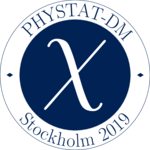Speakers
Description
I will discuss aspects of the frequentist and Bayesian approaches to testing a point null hypothesis (say mu=0) versus a continuous alternative hypothesis (say mu>0). This test arises frequently in particle physics (including dark matter searches), where mu is the signal strength. The frequentist testing approach maps identically onto the frequentist theory of confidence intervals. Thus, as Feldman and Cousins eventually realized, the method advocated in their 1998 paper on confidence intervals maps identically onto the "classical" theory of hypothesis testing in Kendall and Stuart (which in addition includes nuisance parameters). Meanwhile, the traditional Bayesian approach to hypothesis testing (due to Jeffreys) is completely separate from the Bayesian approach to credible intervals, with no corresponding mapping. Direct sensitivity to the prior pdf for mu, even in the asymptotic limit of large sample size, is a consequence, as is the Jeffreys-Lindley paradox (arXiv:1310.3791). My talk will draw on parts of my “Lectures on Statistics in Theory: Prelude to Statistics in Practice” arXiv:1807.05996.
